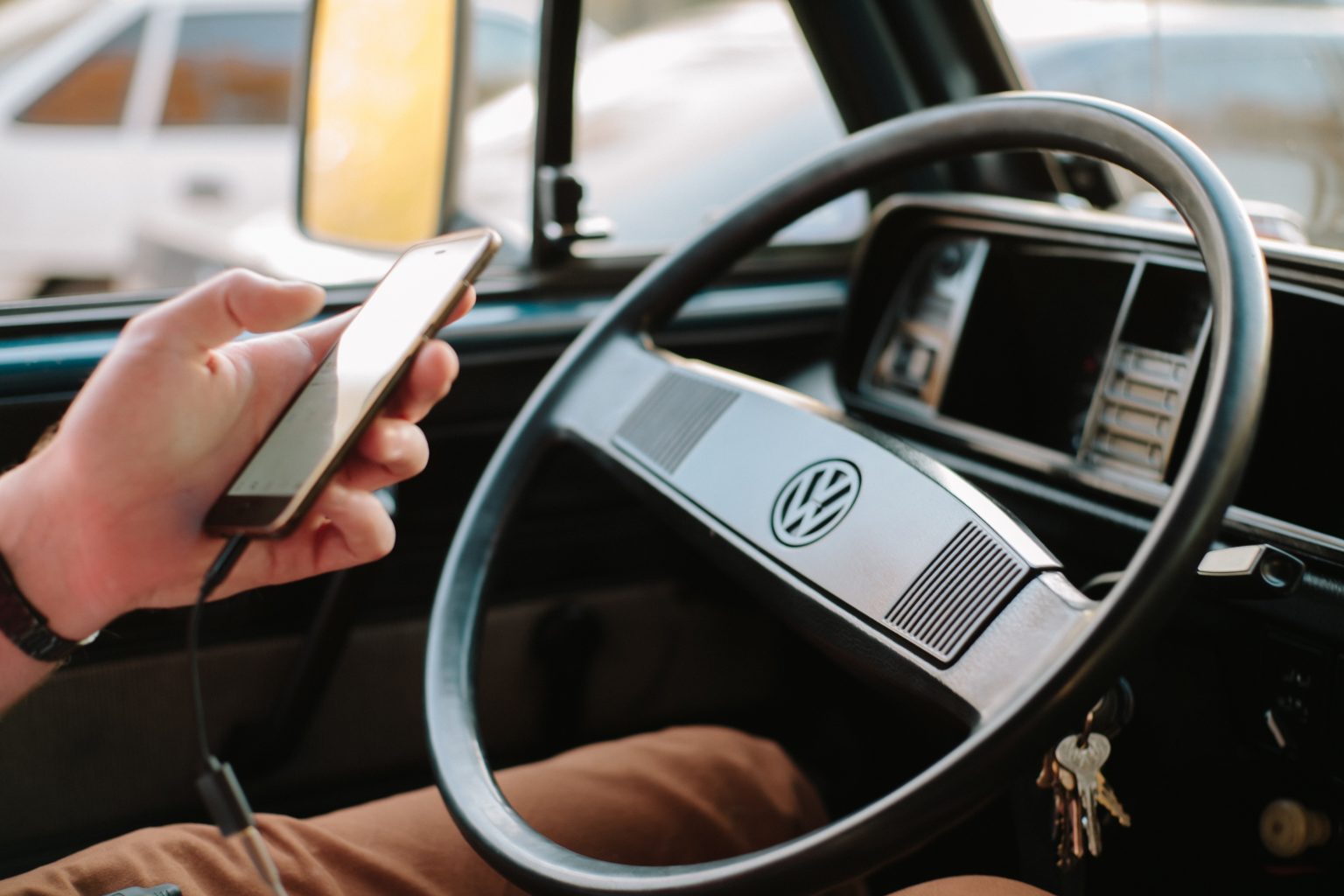For as long as there have been cars, there have been distracted drivers.
Traditionally, it involved things like a crying baby in the back seat, spilled coffee, fiddling with the radio, or putting on finishing makeup touches.
Distracted driving is simply something that diverts the driver’s attention from his or her primary focus. While on the road, these are distractions from the road, traffic signs and signals, other drivers, the conditions, etc.

The challenge with 24/7 connectivity
Not surprisingly, cell phones and the ability to stay connected have taken distracted driving to new levels.
With 97% of Americans now owning a cell phone and 85% of them owning a smartphone (according to the Pew Research Center), we are a decidedly very connected nation.
And with that, we have lots of potential for distracted driving. Although cell phones have been around since the 1980’s, the early ones were too costly ($3500 in 1983), too big (think shoebox-sized), too heavy (2.5 pounds) and too limited in connectivity (10 hours of charging gave you only about 35 minutes of talk time) to create the kind of distraction that today’s smartphones do.
Indeed, our experience handling car accident injury cases is reinforced by studies showing an increase in accidents and fatalities at about the same time that smartphones hit the market.
Changing behavior of distracted drivers

Given the devastation car accidents can have, getting people to change their habits is truly vital.
Ideally, we could induce change by dangling the carrot that prompts change. Put the phone down and away anytime you’re behind the wheel — period, full stop.
For anybody driving kids around, just as you (hopefully) always buckle up, you should also put that phone away. Be the example of what you want your kids to do.
Phone apps that put your phone in “Do Not Disturb” mode can help. Public service campaigns, understanding how quickly things can turn tragic (in the five seconds it takes to read a text is the equivalent of driving blindfolded the length of a football field) and an appreciation for the prevalence of the problem provide sobering reminders that cell phone use while driving is reckless.
How to impact drivers’ attitudes
Because almost 28% of drivers recently surveyed thought that they could safely drive and use their phones, clearly carrots alone aren’t going to fix things.
Wielding a big stick can also make a difference. Thankfully, nearly all states now ban text messaging, although only about half ban hand-held cell phone use. Another factor is that many states prohibit phone use by young drivers.
In the end, evidence shows strong laws can make a difference at least in the form of fewer ER visits.
Geography (i.e., what state you drive in), however, plays a part in the effectiveness of bans, as this quick survey of states’ laws illustrates:
- Fines: First-time texting-while-driving violators can face a fine of up to $1000 in Oregon. On the other hand, in California and South Carolina drivers face only a $20 and $25, respectively fine for violating the state ban.
- Points: In Illinois, a violation carries a 10-point assessment on your license … with 15 points triggering a license suspension. Many states, however (including once again, California and South Carolina), don’t assess points for violations.
- Other Considerations: Lack of consistent enforcement and whether loopholes exist that allow for accepted uses of your phone while driving, unfortunately, can effectively render a ban toothless, as Florida has learned.
- No stick though is the worst, as which does not ban texting, has sadly experienced in the form of the highest rates of distractive driving deaths in the country.
Conclusion
There are no easy or simple answers and no quick fixes when it comes to distracted driving. Stiffer laws and consistent enforcement help. Technology improvements whether in the phone or the car (e.g., crash avoidance warnings) can help.
Driver’s motivation to abide by the law and the overwhelming evidence of the seriousness of the problem matter a lot.
But ultimately, the problem of distracted drivers caused by cell phone use is one that’s here to stay.